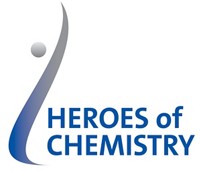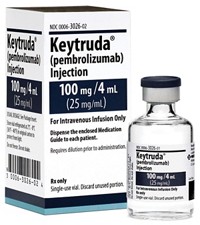Advertisement
Grab your lab coat. Let's get started
Welcome!
Welcome!
Create an account below to get 6 C&EN articles per month, receive newsletters and more - all free.
It seems this is your first time logging in online. Please enter the following information to continue.
As an ACS member you automatically get access to this site. All we need is few more details to create your reading experience.
Not you? Sign in with a different account.
Not you? Sign in with a different account.
ERROR 1
ERROR 1
ERROR 2
ERROR 2
ERROR 2
ERROR 2
ERROR 2
Password and Confirm password must match.
If you have an ACS member number, please enter it here so we can link this account to your membership. (optional)
ERROR 2
ACS values your privacy. By submitting your information, you are gaining access to C&EN and subscribing to our weekly newsletter. We use the information you provide to make your reading experience better, and we will never sell your data to third party members.
Programs
Celebrating industry’s impact with ACS’s Heroes of Chemistry Award
Awards honor 4 industrial teams behind life-changing products
by Linda Wang
November 2, 2019
| A version of this story appeared in
Volume 97, Issue 43
Four industrial teams whose work has improved the lives of people around the world through advancements in printing, pharmaceuticals, and automotive paint were honored with the 2019 Heroes of Chemistry Award during the American Chemical Society national meeting in San Diego in August. The winning teams are from DuPont; Paratek Pharmaceuticals; Pharmacyclics, an AbbVie company; and PPG Industries.
Started in 1996, the Heroes of Chemistry Award is ACS’s most prestigious honor for industrial chemists, who make up approximately half of ACS’s membership.
Here’s a look at the teams being honored this year:
DuPont: Cyrel Easy

The DuPont team’s development of the Cyrel Easy flexographic printing plate technology has led to higher ink densities and color saturation, as well as improved print quality and consistency. Applications include more vibrant and eye-catching consumer product packaging, such as wine bottle labels, potato chip bags, and juice boxes.
Like the modern-day version of a letterpress, flexographic printing technology applies ink to the surface of a flexible relief plate, and that ink is then transferred to different materials, such as paper and plastic.
Lyla El-Sayed, R&D manager at DuPont who led the award-winning team, says the development of Cyrel Easy resulted from customers’ needs for higher print densities. “To increase print density, we needed to control the structure of the plate surface,” she says. “This meant we needed to overcome oxygen quenching during the photoreaction to produce a latent image that would survive subsequent processing without deformation.”
El-Sayed recalls the team’s excitement when the first results from prototype testing came in. “We got these really extraordinary print densities, and we didn’t believe them. They were just too high. We sent the researchers back several times to get more data, but the results kept coming back positive. That was really exciting.”
The Cyrel Easy technology is also environmentally friendly, reducing greenhouse gas emissions by over 50% and energy consumption by about 60%.
El-Sayed says the team’s diversity contributed to a successful product. “Our team is made of people with expertise in different areas, and they approach problems differently,” she says. “Some folks understand the photochemistry better, some understand the polymers better, some are good at statistical analysis, and others understand the interaction of our materials with the process. At the end of the day, we need everyone’s skills to formulate.”
Adrian Lungu, a principal investigator at DuPont who was part of the winning team, says that the work is incredibly rewarding. “If you lay a good scientific foundation and commit yourself to intense research work, you’ll get the ultimate prize: a discovery that will have a long-term impact in people’s life.”
Paratek Pharmaceuticals: Nuzyra (omadacycline) and Seysara (sarecycline)


Launched in the US by Paratek Pharmaceuticals in February, Nuzyra (omadacycline) became the first new tetracycline antibiotic to become commercially available in more than 20 years as a once-daily oral and intravenous antibiotic for the treatment of adults with community-acquired bacterial pneumonia and acute bacterial skin and skin-structure infections. Paratek, with its US partner, Almirall, also launched the tetracycline Seysara (sarecycline) in 2019 for the treatment of acne vulgaris. Both compounds gained US Food and Drug Administration approval in 2018.

Omadacycline and sarecycline aim to combat growing resistance toward tetracyclines. The US Centers for Disease Control and Prevention estimates that drug-resistant bacteria lead to more than 20,000 deaths each year. The research on omadacycline and sarecycline began in the 1980s at Tufts University when researchers first demonstrated that antibiotic drug resistance could be reversed with new derivatives of tetracycline that could inhibit efflux proteins.
Researchers from Paratek modified the scaffolds that make up tetracyclines and came up with a variety of new chemistries with which to develop an unlimited number of derivatives. Omadacycline and sarecycline are the first of these new derivatives to hit the market.
Paratek is studying omadacycline for the treatment of urinary tract infections. The company is also studying the drug’s effectiveness against infectious agents such as anthrax.
Pharmacyclics, an AbbVie company: Imbruvica (ibrutinib)


Imbruvica (ibrutinib) is a once-daily oral drug approved by the FDA to treat six separate diseases: chronic lymphocytic leukemia, small lymphocytic lymphoma, Waldenström’s macroglobulinemia, previously treated mantle cell lymphoma, previously treated marginal zone lymphoma, and previously treated chronic graft-versus-host disease.
The compound works by inhibiting a protein called Bruton’s tyrosine kinase, which plays a role in the survival and spread of malignant B cells.
Team member Mark Smyth points out that ibrutinib was originally developed as a lab tool rather than a molecular target, but when it began outperforming other molecules in inhibiting Bruton’s tyrosine kinase, the team decided to evaluate the compound for clinical development. “We almost missed it,” Smyth says of the accidental discovery. “It’s a remarkable feeling.”
Smyth, who is executive director of chemical development and manufacturing at Pharmacyclics, says one of his most memorable days on the project was when the team heard testimonials from patients. “Some of the patients who got on the very first clinical trial had started experiencing changes in the density of their tumors soon after starting taking the drug,” Smyth says. “The power of these words from patients is just astounding. It really helped motivate me to do everything I could to keep this drug coming.”
Because of the increased demand for the drug, the team faced challenges in scaling it up. “At one point in the earlier days, we came within 2 weeks of running out of drug supply in the clinic,” Smyth says. “Thanks to the team, we rallied, and from our part all the way up through regulatory, we successfully restocked the supply without any interruptions.”
One patient grateful for the team’s perseverance is La Verne, whose last name is being withheld for privacy. Imbruvica helped La Verne get her quality of life back. “My lymph nodes were no longer swollen. My white blood count spiked early on, as expected, and then began slowly decreasing, just as we hoped,” she says. “Today, I continue to paint the masterpiece that is my life, now that I have been given a broad palette of colorful paints and wonderful brushes. And for that, I am truly grateful.”
PPG Industries: B1:B2 compact process

The traditional automotive paint process is costly and time consuming, involving the application of multiple layers of paint and several oven curing steps. The team at PPG developed the B1:B2 compact process, which eliminates several steps in the traditional coating process and reduces carbon emissions by as much as 43%.
The new technology eliminates the primer layer and its associated processing. Instead, the B1 layer provides primer, filling, antichip, and durability qualities. The B2 layer provides color and additional durability. The research team also reformulated the paint layers to prevent damage from sunlight.
“We had to make sure that the coatings still had all the physical performance and attributes that our customers were used to, but we were compacting the process for them,” says Leigh-Ann Humbert, a senior research manager and part of the winning team. “For them to make such a change in a technology, we had to prove it to them that what we had was sound and going to be able to work for them, because there’s a lot of risk in them changing their process.”
Team member Dennis Simpson, a PPG coatings scientist, remembers visiting a site near Fort Lauderdale, Florida, where a lot of environmental exposure testing was being done with panels coated with the B1:B2 compact process. “If you go to the car dealer, you have maybe a choice of 15 or 20 different colors. So just multiply that by all the potential colors out there,” he says. “We needed to understand the color space.”
Both Simpson and Humbert say that the rewards that come with developing a successful product are immeasurable. “It’s fun to know that it’s a product that started to change the whole car manufacturing industry,” Humbert says. “How many times can you say that that has happened in an industry that you’re working on?”
The winners




Nominations for 2020 are open through Feb. 1, 2020. Visit www.acs.org/heroes for more information.
CORRECTION
This article was updated on Nov. 12, 2019, to correct the spelling of Zhengying Pan's name in a photo caption.





Join the conversation
Contact the reporter
Submit a Letter to the Editor for publication
Engage with us on Twitter